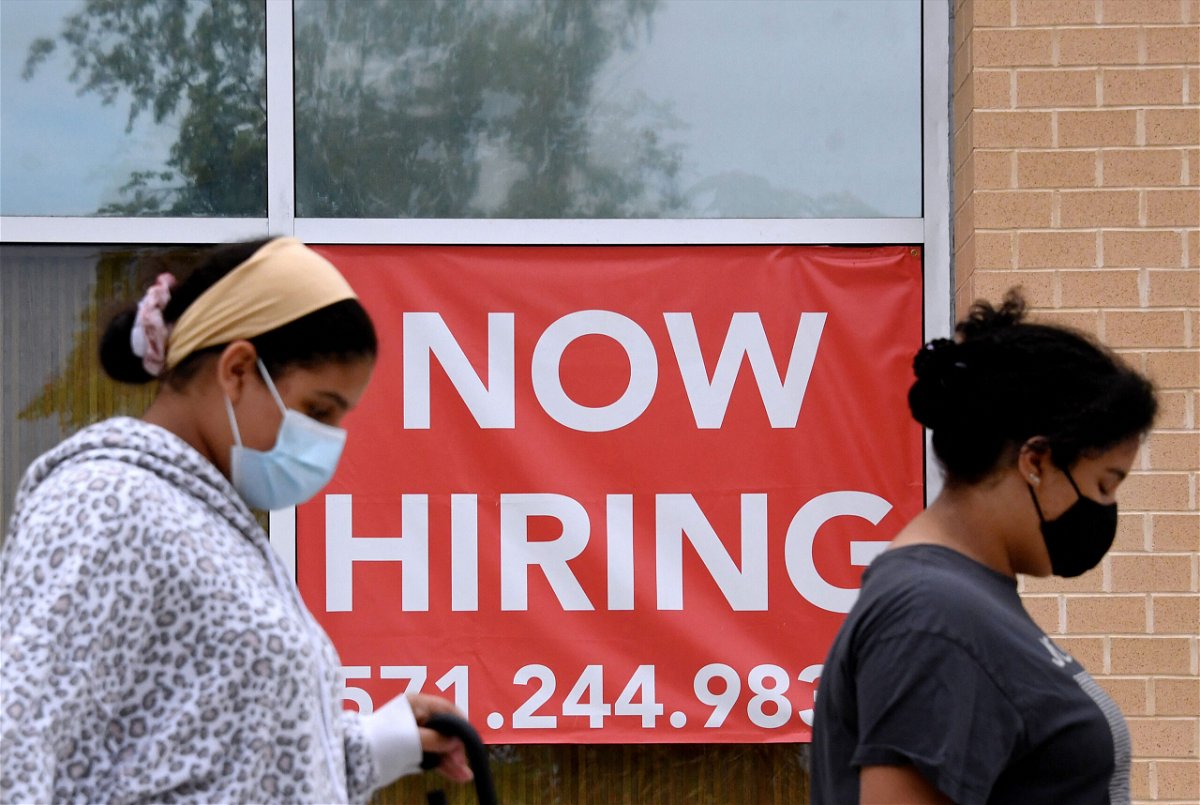It’s premature to declare economic victory from the Covid crash

The US economy is recovering from Covid faster than many imagined possible.
By Matt Egan, CNN Business
In March 2020, the US economy faced the specter of a financial crisis and a full-blown depression as Covid-19 crippled American society.
That nightmare scenario was avoided, in large part because of an unprecedented response from the federal government that included stimulus checks, small business loans and emergency credit programs. Later, the historically fast rollout of safe and effective vaccines paved the way for a rapid recovery.
The pandemic recession was the deepest on records that go back to 1948, according to the Bureau of Economic Analysis. But it was also the shortest — spanning just two months.
The US economy is recovering from Covid faster than many imagined possible. Indeed, the total size of the US economy is now slightly larger than it was before Covid.
Yet by many measures, the recovery from Covid is incomplete — especially for Main Street.
- The US economy remains 5.3 million jobs shy of where it was in February 2020. Mark Zandi of Moody’s Analytics doesn’t expect a full jobs recovery until early 2023.
- The unemployment rate has plunged from nearly 15% in April 2020 to just 5.2% last month. That compares with 3.5% rate in February 2020.
- The number of Americans in poverty rose by 3.3 million in 2020, according to the Census Bureau’s official poverty measure. However, stimulus payments blunted the damage, keeping an estimated 11.7 million Americans out of poverty.
- The official poverty rate rose off historic lows to 11.4% in 2020. An alternative poverty measure declined in 2020 to 9.1%.
- Median household income fell 2.9% in 2020 to $67,521, the first statistically significant decline since 2011.
- Consumer sentiment stood at 71 in early September, according to the University of Michigan. That’s well below the pre-Covid level of roughly 100.
In some ways, it’s a confusing time to understand precisely what is going on in the economy. There are so many moving pieces clouding the view of the recovery.
For instance, the impact on the jobs market from the reopening of schools and daycares and expiration of enhanced unemployment benefits is only beginning to be felt.
In July, there were 10.9 million job openings in the United States, the highest on record going back to 2000. That’s up sharply from about 7 million unfilled positions in February 2020.
The Delta variant has slowed growth in high-contact industries as it spreads through various regions and then recedes.
The rapid shutdown and then reopening of the economy has caused supply chain nightmares, creating price hikes, congestion at ports and shortages of everything from new cars and lumber to computer chips.
The good news is that workers are making more money. But they are also contending with higher costs of living.
- Average hourly earnings hit $30.73 in August. That’s up 8% from February 2020.
- Consumer prices rose in June and July at the fastest 12-month pace since 2008 before cooling a bit in August.
- When adjusted for inflation, compensation is now lower than it was in December 2019, according to an analysis released in August by Harvard University’s Jason Furman.
Although tech companies and other industries boomed during the pandemic, some parts of the economy remain hobbled.
- There are a staggering 90,000 restaurants that are closed permanently or long-term and the industry is 1 million jobs below where it should be before the pandemic, according to the National Restaurant Association.
- Despite steady hiring this year by airlines, total payrolls in the air transportation sector is 70,500 below the level of March 2020, according to the BLS.
- The Delta variant stalled hiring in the leisure and hospitality sector in August. Restaurants and bars lost 42,000 jobs last month.
The recovery has been more obvious on Wall Street, where stocks rapidly recovered from the bear market — and kept booming.
- The S&P 500 has nearly doubled (up 99%) its March 23, 2020 low and stands at record highs. The index hasn’t suffered a 10% correction during the entire recovery.
- The Nasdaq is up even more over that span, gaining 120% from Covid lows.
- The market value of the S&P 500 reached $40 trillion at the end of March, up by $12 trillion from the pre-Covid peak of $28 trillion, according to S&P Dow Jones Indices.
Per-share profits among S&P 500 companies is solidly above pre-crisis levels.
Household wealth has fully recovered from the pandemic because of the boom in stock prices and home values. However, wealth inequality remains glaring.
- The total wealth of the top 1% hit $41.5 trillion as of the end of the first quarter. That’s up 33% from late 2019, according to the Fed.
- Middle class wealth is up by a more modest 15% to $36.5 trillion. The bottom 50% have seen their wealth go up by 23% to $2.6 trillion.
The-CNN-Wire
™ & © 2021 Cable News Network, Inc., a WarnerMedia Company. All rights reserved.
